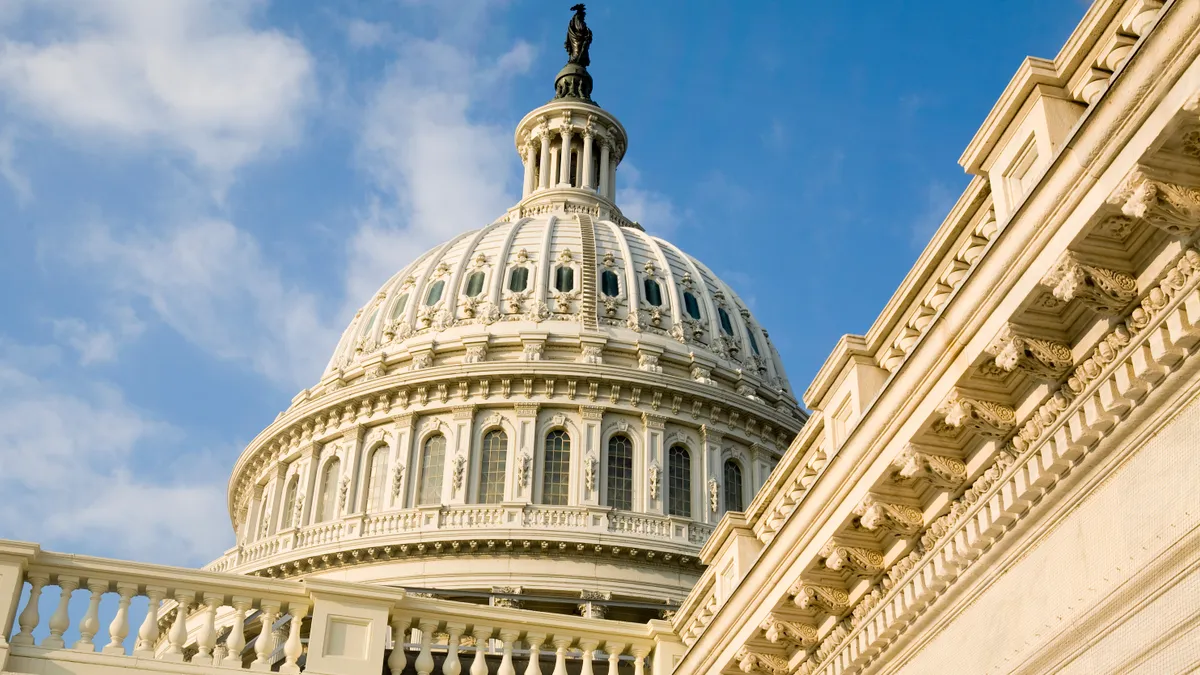With midterm elections less than a week away, a majority of executives surveyed indicated that they see a scenario in which the U.S. House and Senate are flipped to Republicans as a positive for the business environment.
Among executives polled, 59% said both the House and Senate flipping to Republican control would be positive for the business environment, while a slimmer majority (52%) said it would be a positive development for their companies, according to a PricewaterhouseCoopers (PwC) Pulse Survey released Wednesday.
The current climate of political and economic uncertainty spotlights the need for executives to consider adjustments. “[Executives] need to continue thinking strategically in order to thrive in light of the macroeconomic factors outside of their control,” said Kathryn Kaminksy, vice-chair and co-leader of Trust Solutions at PwC, in a call with reporters Wednesday.
The study polled 657 U.S. executives across industries, including CFOs and finance leaders, human capital leaders and others last month.
Leaders ‘on alert’
Executives’ positive outlook should a change of control in Congress take hold comes as they show concern over macroeconomic conditions. More than 80% believe there will be a recession in the next six months. Areas of concern include inflation and a decline in consumer purchasing power; the Federal Reserve’s tightening cycle; and a higher cost of capital.
In addition, more than 80% polled said they were either “moderately concerned” or “very concerned” about a more active regulatory and legislative environment in the U.S.
“The SEC’s proposed rules around climate change disclosures and cybersecurity disclosures have boards and risk leaders on alert,” the survey said.
Over the next 12 to 18 months, executives are making cautious moves paired with investments to drive growth, according to PwC.
On hiring, some companies may shrink headcounts while continuing to hire in priority areas. The tension between shrinking headcounts and ongoing talent shortages has created a “labor market paradox,” Bhushan Sethi, joint global leader, people and organization at PricewaterhouseCoopers, said in August.
This dynamic played out in PwC’s October survey, in which 44% of executives said they are hiring in “specific areas to drive growth”; 42% said they are planning cost cutting (not including headcount reductions); and 26% are planning to reduce the number of full-time employees.
Meanwhile, 81% of chief human resources officers said they're implementing at least one tactic to reduce their workforce, including layoffs, voluntary retirement, not replacing people who leave, hiring freezes and performance-based cuts.
The long game
“What we're really seeing is them kind of shoring up for [the] longer term, trying to say, ‘Hey, we are confident about growth. We need particular roles, particular skill sets,’ but they're still making investments in automation to try to de-risk from not being able to find the labor that they're looking for,” said Julia Lamm, global workforce strategy leader at PwC.
Despite momentum toward remote and hybrid work during the pandemic, many companies are now pushing for more on-site workers.
Nearly two-thirds (64%) of leaders say their company needs as many people back on site as possible – up from 59% in August 2021 – and just over two-thirds are concerned that the move back on-site “is happening more slowly than expected,” the study said.
“Obviously, that's a big elephant in the room as many companies are still pushing for employees to come back, and the expectations around how often and why employees are coming back on site continues to evolve,” said Lamm.












